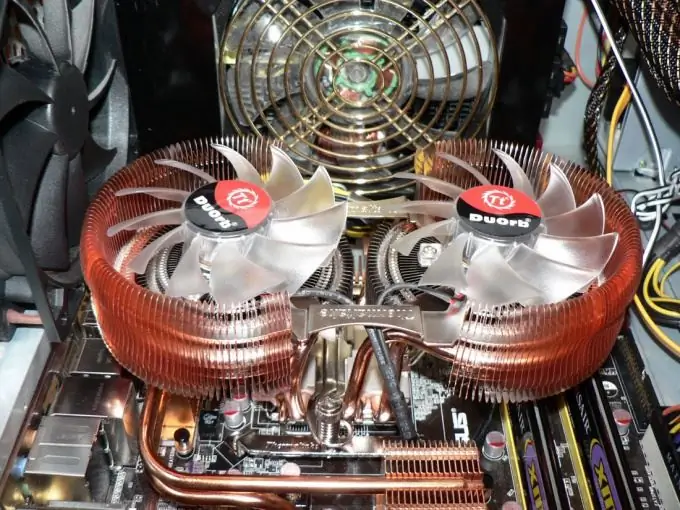To prevent overheating and damage to some parts of the computer system unit, fans must be attached to them. For the successful implementation of this process, you need to know some of its subtleties.

It is necessary
- - SpeedFan;
- - Speccy;
- - crosshead screwdriver.
Instructions
Step 1
First, choose a fan. Pay attention to the dimensions of the device. The cooler shouldn't be too big, because it can make it difficult to mount it in the right place. Examine the size, number and location of the screw holes. They must line up with the holes on the part or the body of the unit.
Step 2
Pay attention to the format of the power supply to the fan. Usually there is a two, three or four-core wire from the cooler. Make sure you can connect the fan of your choice to the motherboard or hardware to which it is attached. Remember one trick: you can, for example, attach the fan to the video card, and connect the power to the motherboard.
Step 3
Pay attention to the maximum number of fan revolutions. This is a very important parameter, because when installing a weak cooler, you risk not getting the desired cooling result for the device.
Step 4
Turn off your computer. Remove the cover from the case of the system unit. Install the cooler in the desired location. Connect the power cable to an appropriate connector. Turn on your computer.
Step 5
Install the Speccy program. Start it up. Check the temperature of the device to which you connected the cooler. If it is still too high, adjust the fan settings.
Step 6
Install SpeedFan software and run it. Open the "Metrics" menu. It will present several fans and the temperature of the devices to which they are connected.
Step 7
To increase the rotation speed of the required fan, click the Up arrow at the bottom of the program window. Achieve the ideal ratio between the temperature of the device and the rotational speed of the cooler. You can activate the "Auto fan speed" function. The program will automatically adjust the speed of rotation of the blades to achieve the optimal ratio of temperature and energy consumption.






